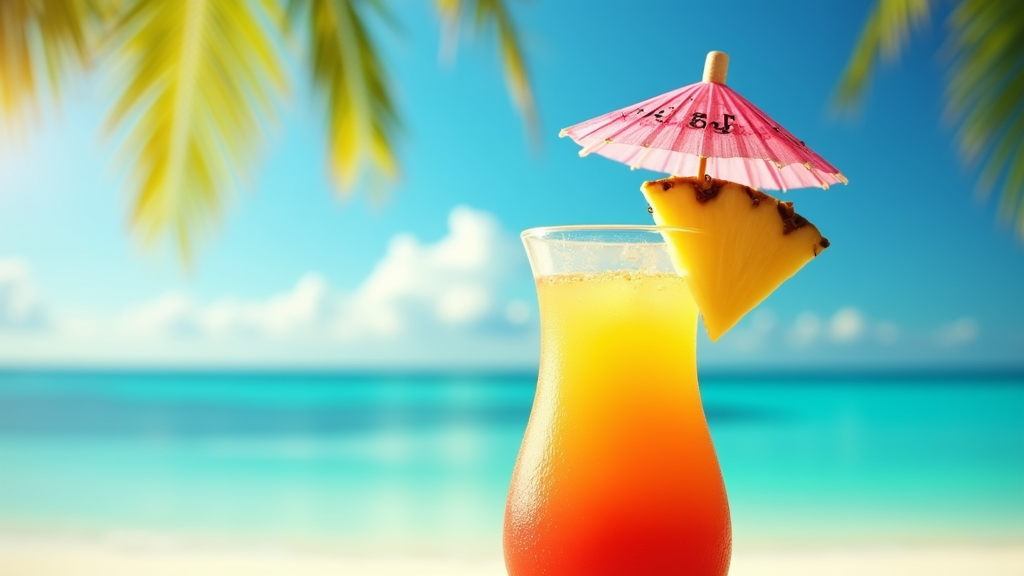Rum’s history is as rich as it is storied, weaving its way through centuries of human adventure. This sweet, potent beverage started its journey in the Caribbean, where sugar plantations gave rise to a spirited drink born out of sugarcane and molasses. Its production wasn’t just about sipping something delightful but about using every scrap of the treasured crop.
Imagine being aboard a ship navigating the high seas with a barrel of rum sloshing in the hold—crucial for sailors and pirates alike. Rum wasn’t just a tipple; it was a staple of maritime life. It came in handy as a currency, a ration, and a source of courage for those seafarers facing the unpredictability of the ocean.
The 17th and 18th centuries saw rum’s fame leap across waters, spreading out of the Caribbean and grasping the attention of drinkers in Europe and the American colonies. Taverns and bars across the New World buzzed with rum’s heady fumes, becoming central to not only social life but also trade and economics, with goods exchanged and bonds formed over a shared dram.
Rum even played a part in American history, contributing to the economy of colonial towns. It’s hard to overstate its importance—rum was money, fun, and a statement rolled into one package. Its influence was widespread, marking rum not just as a drink but as a symbol of culture, trade, and colonial legacy.
Tiki Culture Emergence: A Polynesian Fantasy
Tiki culture wasn’t just born; it exploded onto the American scene with a burst of island vibes and exotic allure in the mid-20th century. It all started when World War II veterans returned home, bringing with them tales of the South Pacific’s palm-fringed paradises and colorful traditions. America was primed for an escape, and Tiki provided that sun-soaked dream far from the everyday grind.
Innovators like Don the Beachcomber and Trader Vic were more than restaurateurs; they were pioneers of an entire movement. Donn Beach (born Ernest Raymond Beaumont Gantt) opened the first Tiki bar in Los Angeles in the 1930s, crafting a Polynesian-inspired oasis. Meanwhile, Victor Bergeron, better known as Trader Vic, transformed his restaurant into another exciting Tiki haven, full of lush décor and flamboyant cocktails.
Hollywood soon took notice, embedding Tiki culture in cinema and further fueling its fascination. Giant totem poles, bamboo furnishings, and torch-lit ambiences became the norm in these immersive spaces. It was all about creating a tropic escape right in the urban heartlands, where reality melted away amidst bamboo swaying and ukulele strumming.
What set Tiki apart was its mix of fantasy and reality. Places drenched in Polynesian themes became sanctuaries offering exotic drinks and cuisines far different from the standards of the day. The aesthetic was fantastical, creating a unique blend of cultural inspiration, artistic invention, and sheer escapism, allowing people to disconnect and explore their own version of paradise.
Rum: The Heart and Soul of Tiki Drinks
In the world of Tiki cocktails, rum is the undisputed champion, serving as the core ingredient that adds richness and vibrancy to each drink. The magic of Tiki lies not only in its lush decor but in the irresistible concoctions that transport you straight to a sunny beach.
Classic Tiki drinks like the Mai Tai and the Zombie put rum center stage, making it the star of the show. Each of these iconic beverages offers something unique. The Mai Tai, for instance, is a delightful mix of rum, lime, and a hint of orange that’s perfectly balanced and oh-so-refreshing. Meanwhile, the Zombie, as the name suggests, is a powerhouse of multiple rums layered with fruit juices, crafting a bold taste that packs quite a punch.
Rum comes in many forms, each adding its own character to Tiki cocktails. Light rum brings a crispness ideal for refreshing drinks. Dark rum introduces deeper, caramel notes, while spiced rum adds a bit of warmth and complexity. Choosing the right type of rum can totally transform the flavor experience of any cocktail, turning it from good to unforgettable.
Mixing Tiki cocktails is both an art and a science. It’s about finding harmony between sweet, sour, and strong elements to create a balanced drink. Mastering the balance is key—too much of one element, and the whole drink can feel off. A well-mixed Tiki cocktail combines different spirits and fresh ingredients, crafting a symphony of flavors that are as fun to drink as they are to make.
The Evolution and Modern Renaissance of Tiki Culture
Today’s Tiki scene is undergoing a thrilling revival, infusing fresh life into those dreamy, Polynesian-inspired getaways. Modern mixologists and chefs are reimagining the classic Tiki experience with inventive twists, blending traditional elements with new, exciting flavors.
New-wave Tiki bars are popping up all over the globe, each offering its own unique spin on the Tiki tradition. Here, the influence of rum still reigns supreme as bartenders craft inventive, eye-catching cocktails using premium, ethically-sourced spirits. There’s a growing emphasis on sustainability, not just in the selection of rum, but also in how bars operate—using fresh, local ingredients and minimizing waste.
The Tiki renaissance isn’t just happening behind the bar. It’s a huge part of a global community of enthusiasts dedicated to preserving and celebrating the spirit of Tiki. From online forums to themed conventions and meet-ups, there’s a thriving culture that brings together like-minded fans eager to share experiences and tips on everything from drink mixing to decorating home Tiki bars.
As Tiki culture evolves, it remains a vibrant reflection of the original quest for escapism, creativity, and social enjoyment. Its modern iteration respects the rich history while continuing to innovate, ensuring that the Tiki adventure is just as enchanting today as it was in its golden era.

